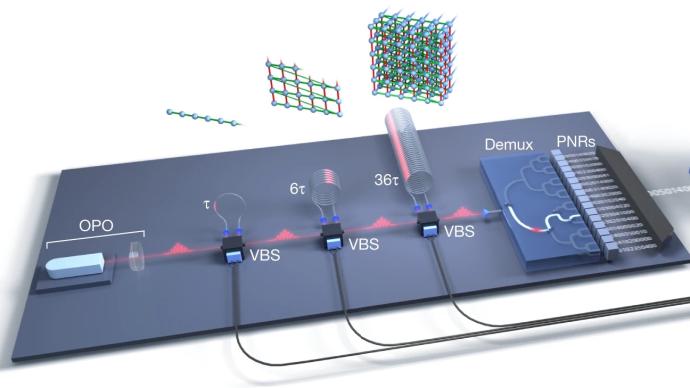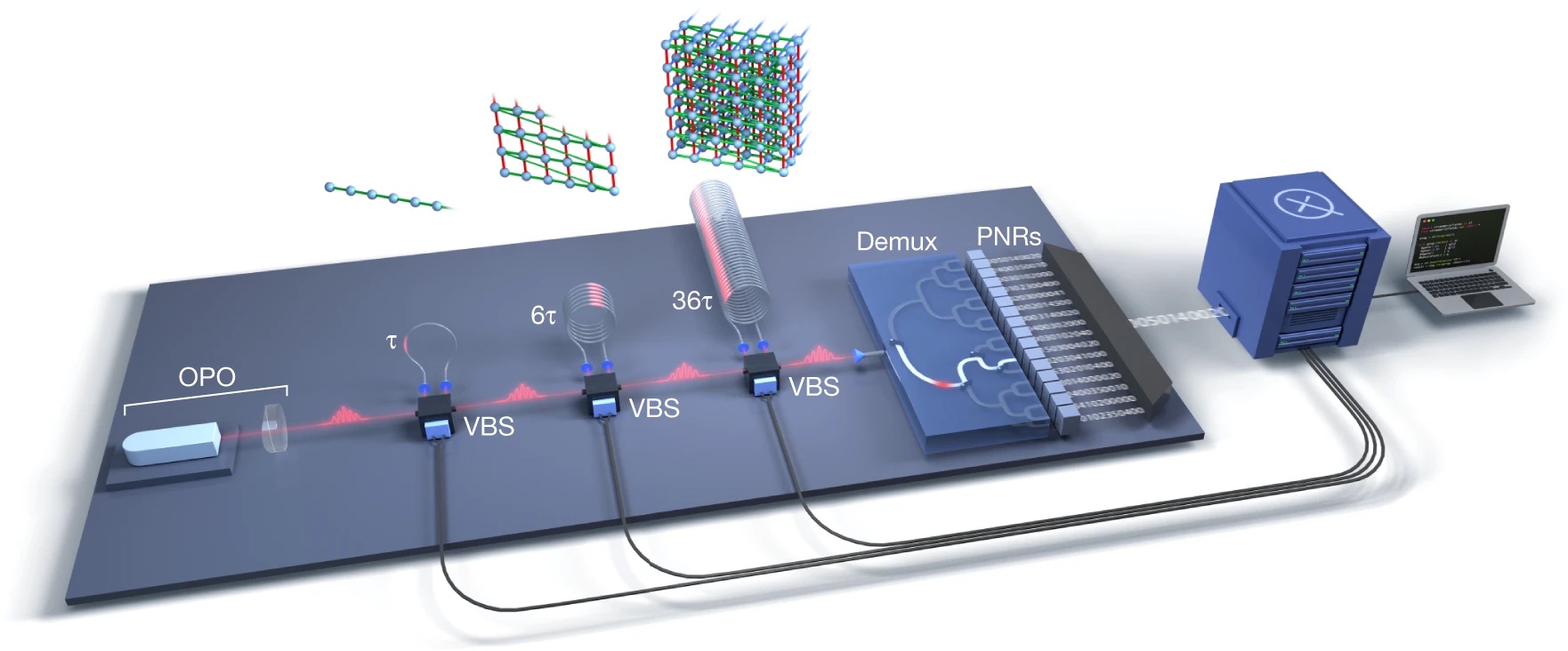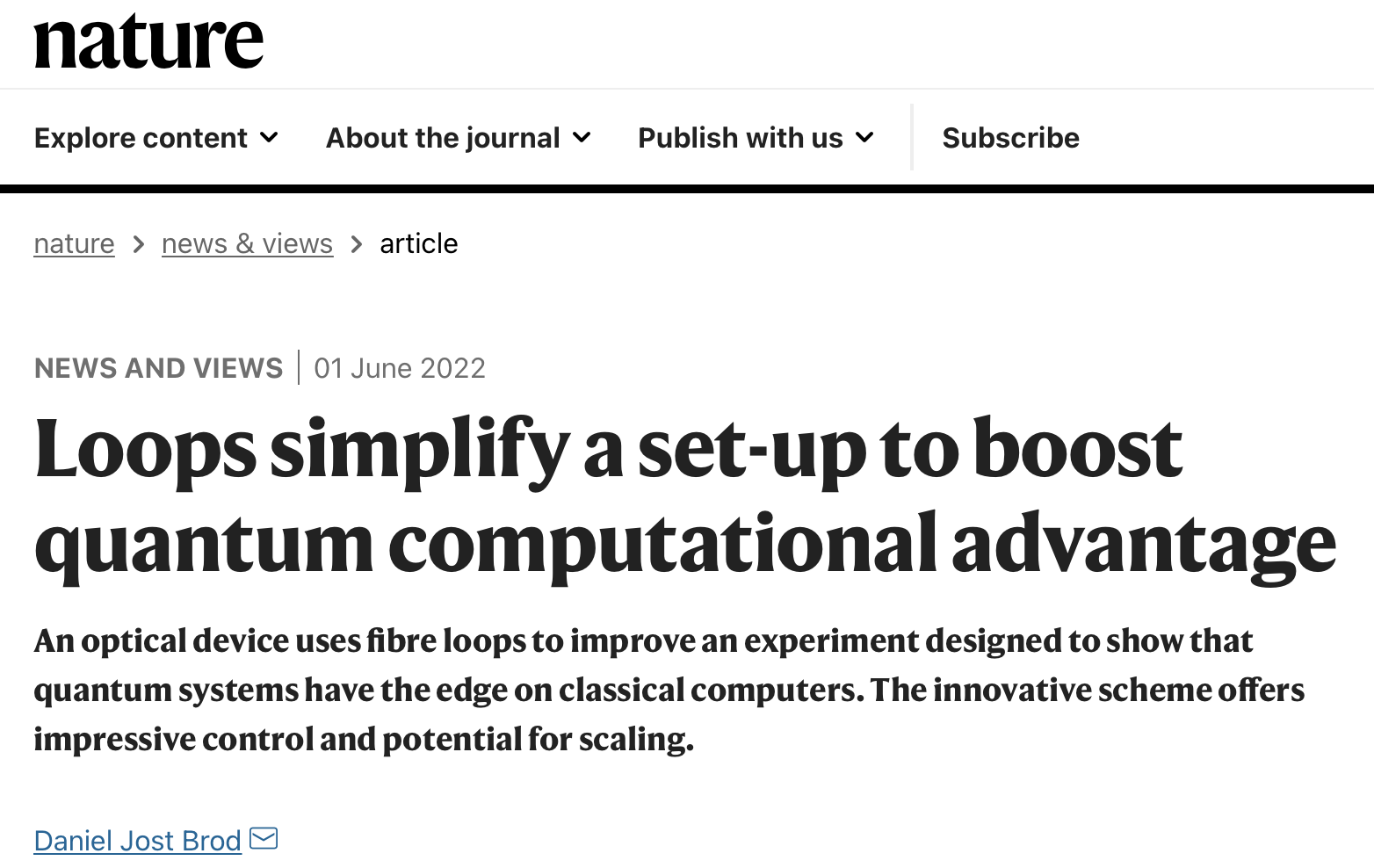
Scientists have used an optical quantum processor called Borealis to perform a task that took supercomputers more than 9,000 years to complete in just 36 microseconds. The related results were published in Nature on June 1. 
A key goal of quantum computing devices is to surpass classical computing systems and establish "quantum superiority," but so far only a few experiments have reported results. For example, the "Jiuzhang" optical quantum computer prototype developed by a team at the University of Science and Technology of China in December 2020 achieved "quantum superiority" when solving the "Gaussian Bose Sampling" (GBS) problem. The experiment, completed in 200 seconds, would take 600 million years to complete if simulated on the world's most powerful supercomputer.
And one way to demonstrate the superiority of a quantum system over a classical computer is to compare the speed at which the two are sampled from an unknown probability distribution that characterizes the propagation of photons through a network, known as Gaussian Bose sampling. One can calculate how long a classical computer would take to perform this task. There is a threshold for the number of photons above which a classical computer cannot complete the computation in a reasonable amount of time.
Previously reported experiments implementing Gaussian Bose sampling, using up to 113 photons, propagated in a network of fixed mirrors and lenses. This time, Jonathan Lavoie, a researcher at Canadian optical quantum computing company Xanadu, and his colleagues can detect up to 219 photons (125 on average) by conducting experiments on a programmable photonic single processor.
The researchers propose that this is the "most quantum-superior" photonic experiment ever reported. Compared with other photon experiments, the performance improvement is reflected in: simplifying detection photon experiments, introducing programmability and reducing vulnerability to "spoofing" (meaning that quantum results can be repeated by classical algorithms).
Compared with previous proof-of-principle experiments, the programmable photonic processors involved in the aforementioned experiments are closer to the possible form of quantum commercial devices.

Programmable photonic single processor, picture from "Nature"
The aforementioned system is an improvement over past photonic devices and may represent a critical step toward a practical quantum computer.A key goal of quantum computing devices is to surpass classical computing systems and establish "quantum superiority," but so far only a few experiments have reported results. For example, the "Jiuzhang" optical quantum computer prototype developed by a team at the University of Science and Technology of China in December 2020 achieved "quantum superiority" when solving the "Gaussian Bose Sampling" (GBS) problem. The experiment, completed in 200 seconds, would take 600 million years to complete if simulated on the world's most powerful supercomputer.
And one way to demonstrate the superiority of a quantum system over a classical computer is to compare the speed at which the two are sampled from an unknown probability distribution that characterizes the propagation of photons through a network, known as Gaussian Bose sampling. One can calculate how long a classical computer would take to perform this task. There is a threshold for the number of photons above which a classical computer cannot complete the computation in a reasonable amount of time.
Previously reported experiments implementing Gaussian Bose sampling, using up to 113 photons, propagated in a network of fixed mirrors and lenses. This time, Jonathan Lavoie, a researcher at Canadian optical quantum computing company Xanadu, and his colleagues can detect up to 219 photons (125 on average) by conducting experiments on a programmable photonic single processor.
The researchers propose that this is the "most quantum-superior" photonic experiment ever reported. Compared with other photon experiments, the performance improvement is reflected in: simplifying detection photon experiments, introducing programmability and reducing vulnerability to "spoofing" (meaning that quantum results can be repeated by classical algorithms).
Compared with previous proof-of-principle experiments, the programmable photonic processors involved in the aforementioned experiments are closer to the possible form of quantum commercial devices.

Picture from "Nature"
In a concurrent News and Views article in Nature, Daniel Jost Brod, a researcher at the Federal University of Fluminense in Brazil, said, "This experiment aims to show that quantum computing systems have advantages over classical computers. This innovative solution provides Impressive potential for [quantum systems] control and scaling."Related Posts
0 Comments
Write A Comments